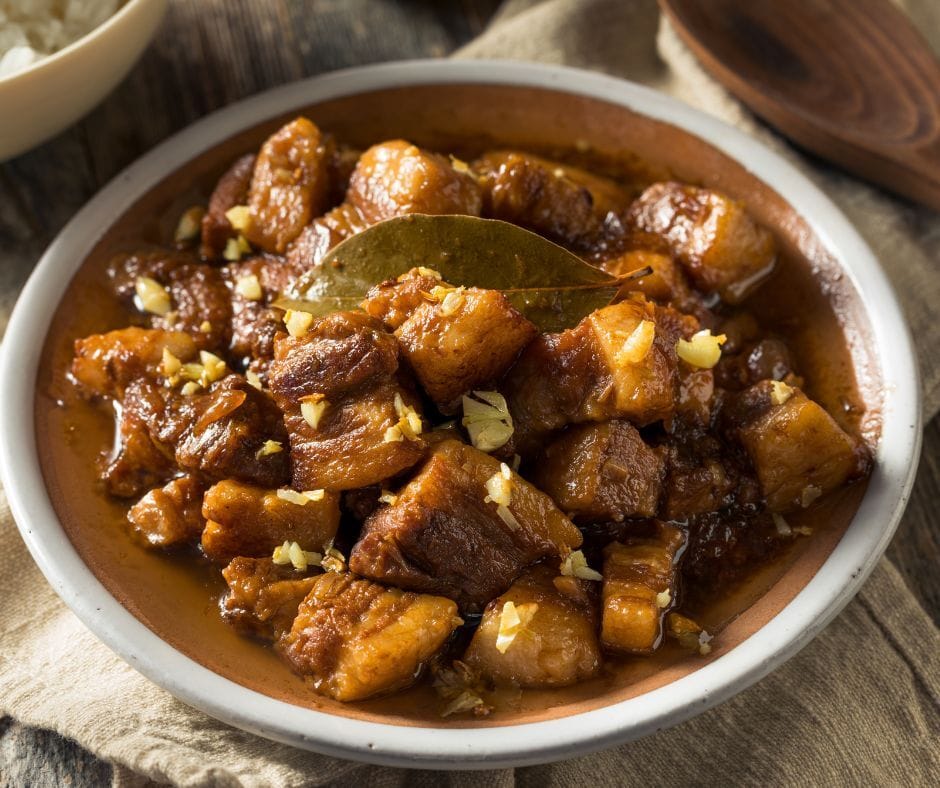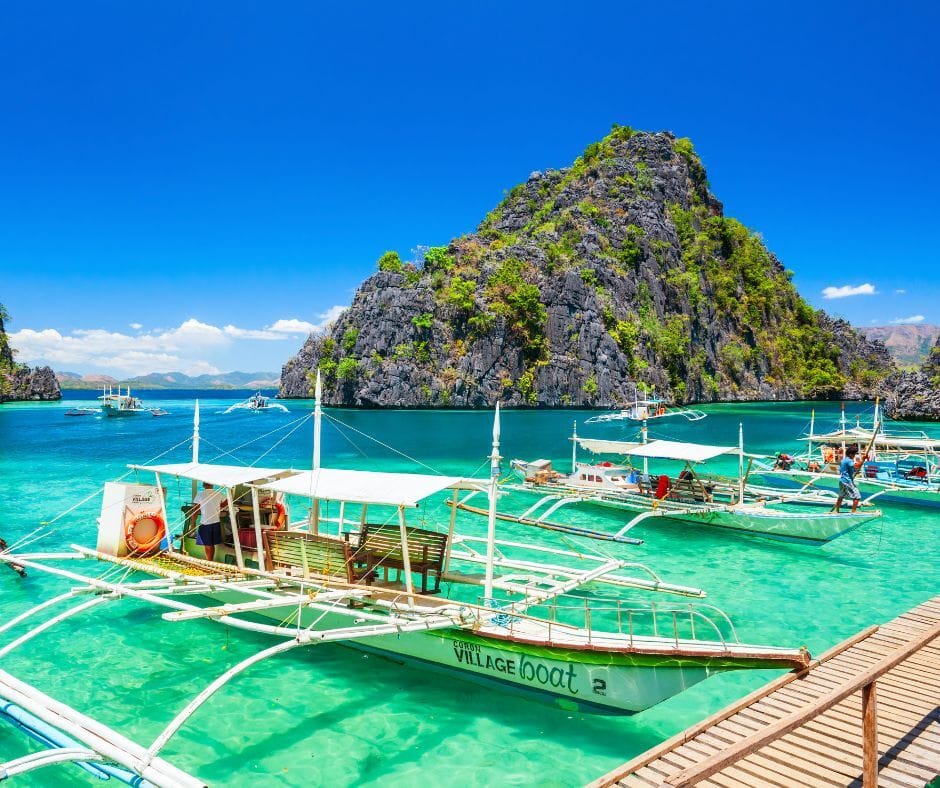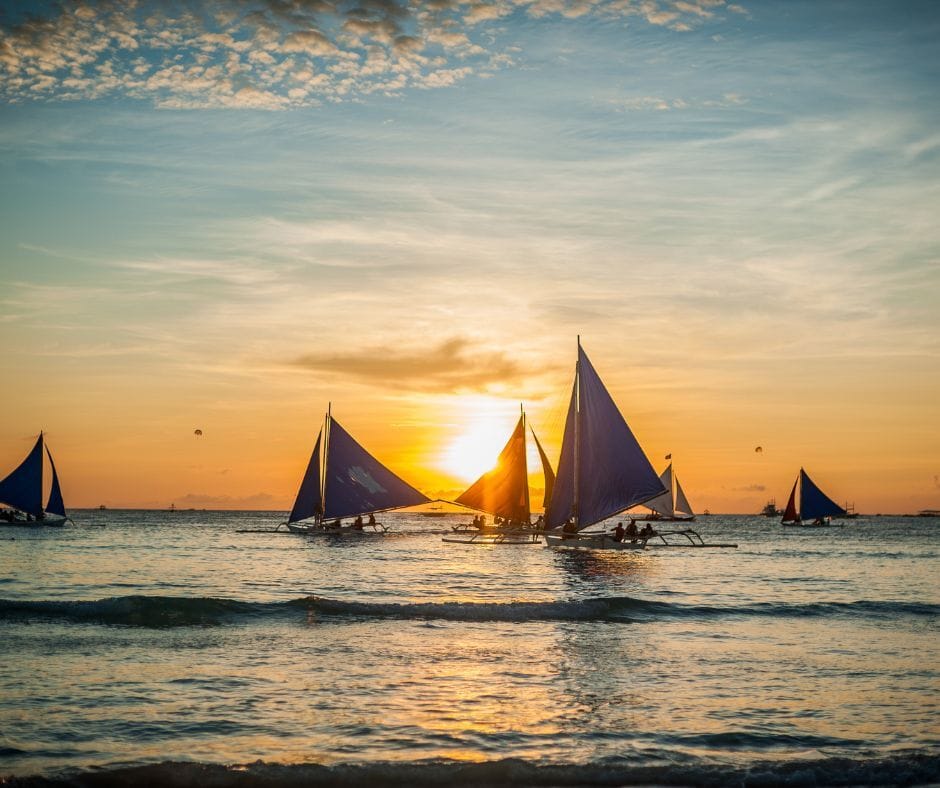- Finding Utopia Newsletter
- Posts
- Adobo — More Than a Recipe: Flavor, History & Heart
Adobo — More Than a Recipe: Flavor, History & Heart
Stories: Adobo — More Than a Recipe: Flavor, History & Heart; Top 10 Spots to Retire in Luzon — Finding Paradise for Your Golden Years; Paraw Boats of the Philippines — Voices of Wind, Water & Heritage

Hello and Mabuhay!
Welcome to Finding Utopia — your trusted guide to exploring the wonders of the Philippines and beyond.
In this edition, we bring you inspiring stories and essential travel insights to fuel your next adventure:
Adobo — More Than a Recipe: Flavor, History & Heart
Top 10 Spots to Retire in Luzon — Finding Paradise for Your Golden Years
Paraw Boats of the Philippines — Voices of Wind, Water & Heritage
Wherever you're dreaming of going next, we're here to guide you closer to your utopia.
Enjoy the read!
— The Finding Utopia Team
Adobo — More Than a Recipe: Flavor, History & Heart

Every Filipino kitchen carries the scent of garlic, vinegar, bay leaf, and peppercorns simmering in a pot of adobo. It’s comfort food, cultural icon, and culinary chameleon rolled into one dish. Adobo — The Quintessential Filipino Dish explores how this beloved meal traces the history, diversity, and soul of Filipino cuisine.
Origins from Preservation to Pride
Before refrigeration, early Filipinos used vinegar and salt—with coconut, palm, or sugarcane vinegars—to preserve meat or seafood. This practice evolved naturally into what we now call adobo. Colonizers later named it “adobo” from the Spanish adobar (“to marinate”), but the dish remained uniquely Filipino in method and flavor.
Core Ingredients & Their Roles
Each component lends a part to the alchemy. • Vinegar is essential: it tenderizes and provides acidity; its preserving quality lets adobo last longer. • Soy sauce (or none in some versions) deepens flavor and darkens the sauce in many Luzon styles. • Bay leaves, peppercorns, garlic, onions, brown sugar: aromatics and balance, bringing herbal notes, heat, and sweetness to round out the dish.
Regional Twists Across the Islands
Luzon: Soy-rich, sometimes with potatoes or hard-boiled eggs to stretch servings.
Visayas: Vinegar-forward; lighter, sometimes skipping soy sauce in favor of sharper tang (adobong puti).
Mindanao: Adobo sa gata (cooked with coconut milk), giving a creamy, richer texture to the savory base.
Other innovations: Adobong pusit (squid adobo), vegetable adobos (like kangkong), adobo sa achuete, or sweet-savory pineapple versions.
Adobo is everywhere: humble carinderias, family kitchens, upscale restaurants. It’s one of the first recipes passed down in Filipino homes, and for overseas Filipinos, cooking adobo is a way to feel connected to home. During fiestas or family gatherings, it feeds many without losing flavor. Its adaptability mirrors Filipino cultural resilience—many versions, same heart.
Health & Modern Adjustments
While classic pork adobo is rich, there are lighter options: chicken, lean cuts, or more vegetables. You can also adjust sodium (low-sodium soy sauce), reduce sugar, balance acidity, or even go vegetarian/vegan using tofu or mushrooms.
Why Adobo Belongs on Your Table
Adobo isn’t just comforting—it’s a living archive of Filipino identity. Every pot held on a stove is a blend of history, resourcefulness, and flavor. Sampling regional adobos is like traveling across islands—tasting vinegar-forward ones, creamy gata versions, or soy-steeped styles provides insight into how geography, available ingredients, and community tastes shape food.
Whether you’re cooking it yourself, asking for local variants on your travels, or ordering it abroad, adobo carries stories. It’s not just a dish—it’s a taste of home, heritage, and the adaptability of Filipino culture.
Read the full article on Adobo:
Top 10 Spots to Retire in Luzon — Finding Paradise for Your Golden Years

Choosing a place to retire is about more than climate or cost—it’s about community, natural beauty, accessible services, and daily quality of life. Luzon, with its mix of mountain retreats, coastal towns, and heritage cities, offers some of the most compelling options in the Philippines. Here are ten places that stand out as smart, serene, and satisfying choices for retirees.
What Makes a Retirement Spot Truly Stand Out
Before jumping into the list, here are a few criteria to look for:
Healthcare & Accessibility: Proximity to good hospitals, clinics, and road or air linkages.
Affordability & Cost of Living: Housing, food, utilities, and transportation—balanced but comfortable.
Natural & Cultural Appeal: Green landscapes, coastal views, heritage towns, quiet neighborhoods.
Amenities & Community: Shops, cafés, social gatherings, security, and convenience.
These were among the key benchmarks for selecting the top 10 in Luzon.
Top 10 Retirement Options in Luzon
Tagaytay: Known for its cool weather and sweeping views of Taal Volcano, Tagaytay is a perennial favorite. Just a couple of hours from Manila, it combines a laid-back atmosphere with easy access to hospitals, shops, and leisure options.
Subic Bay: Once a U.S. naval base, Subic has transformed into a hub for retirees and expats. Its clean environment, good roads, duty-free shopping, and access to beaches make it both convenient and relaxing.
Baguio City: The “Summer Capital of the Philippines” is loved for its pine forests, cool climate, and vibrant arts and food scene. With quality hospitals and universities nearby, Baguio offers both cultural richness and modern amenities.
Coron, Palawan: Though technically part of Palawan, Coron is often grouped with Luzon getaways for retirees seeking paradise. With turquoise lagoons, dive spots, and a slower pace of life, it’s perfect for those who dream of island living.
Vigan: A UNESCO World Heritage site, Vigan enchants with cobblestone streets, Spanish colonial houses, and a historic yet livable environment. Retirees here enjoy a mix of culture, tradition, and modern comforts.
Why These Locations Rise Above
Balance of access and escape: Many fall within a few hours’ drive of Metro Manila or regional airports, yet feel far removed from city bustle.
Diverse climates & scenery: From the cool highlands of Baguio to coastal breezes in Subic or Nasugbu, retirees can choose their setting.
Growing retiree networks: In many of these areas, other retirees and expats already form social circles, facilitating adapting to the lifestyle.
Potential for growth: Regions that are emerging—still affordable but seeing infrastructure and tourism development—offer both value and future upside.
Practical Tips for Retiring in Luzon
Visit first, stay awhile: Try living in the area for a few weeks to test climate, amenities, and pace.
Check medical access: Know how far the nearest hospital is, and what specialty services are available.
Understand property and residency rules: Work with local legal counsel on land, housing, and tax matters.
Factor in transportation: Road conditions, flights, ferry links matter more than you think.
Blend social life & local culture: Engage with the community, local markets, and traditions to feel at home.
Luzon offers a rare combination: landscapes that calm, towns that support, beauty that inspires—and proximity enough to modern services to feel secure. If you’re considering retiring in the Philippines, these ten places are excellent starting points.
Dive into the full list and details here:
Paraw Boats of the Philippines — Voices of Wind, Water & Heritage

More than just a picturesque sight gliding across turquoise seas, the paraw is a vessel that carries centuries of maritime wisdom. With its twin outriggers and elegant sails, this traditional Filipino sailboat tells stories of island life, resilience, and the sea’s subtle language.
Anatomy & Sailing Spirit
Structure: Hull, Outriggers & Rigging A paraw typically includes a main hull (bangka or plank hull) supported by two outriggers called katig. The layag (sails) include a large crab-claw main sail and a jib or foresail that help harness wind power while keeping balance.
Materials & Craft: Traditionally, paraws were built with native woods like dungon, molave, ipil, baslayan, or Philippine mahogany. Ropes used to be crafted from abaca (Manila hemp). Today, many builders also use plywood and synthetic lines for durability and maintenance.
Performance & Use: When well-trimmed, paraws can sail between 11 to 17 knots (20–31 km/h). Some are used for island hopping, fishing, or inter-island transport, while motorized versions (bangkas with outriggers) have replaced many for routine transport.
Revival in Motion
The Balatik Project: One of the most remarkable revival efforts is the Balatik, a full-size paraw built in Palawan using traditional techniques. Over years, it was constructed by artisans across multiple island groups, combining tribal carvings and indigenous knowledge. The boat now sails between Coron and El Nido for education, tourism, and cultural missions.
Tao Paraw Sailing Expeditions: The Tao Paraw Project leverages that revival, offering sailing expeditions aboard traditional paraws—without relying on motorized boats. Routes between El Nido and Palawan’s basecamps celebrate the return of sail, ecological approaches, and cultural engagement.
Paraw Regatta Festival: In Iloilo, the annual Paraw Regatta Festival is the largest gathering of paraw sailboats in the Philippines and the oldest traditional craft event in Asia. Boats from different sizes and styles compete in a course spanning Panay and Guimaras waters.
Sailing Paraws Today — Where You Can Experience It
Boracay Paraw: sailing is iconic in Boracay: tourists enjoy sunset cruises or island-hopping rides aboard local paraws built of wood and bamboo.
El Nido / Palawan Expeditions: Sailing via paraw between islands near El Nido, often curated by Tao Paraw, lets travelers experience more remote lagoons, sea walls, and basecamps—traveling by wind instead of motors.
Tips If You Want to Sail a Paraw
Book with reputable operators: like Tao Paraw or local sailing companies that maintain authenticity and safety.
Choose the right season: dry months (roughly October to May) give steadier winds and calm seas.
Bring essentials: sun protection, water, light clothes, waterproof bags, camera.
Respect limits: Paraw tours often have capacity constraints to protect coral ecosystems and sea life.
Learn the craft: Ask your guide about sail trimming, wind angles, and how outriggers help stability — it deepens appreciation.
For anyone drawn to islands, sea, and heritage, sailing a paraw is not just travel—it’s stepping into a living archive of Filipino maritime identity. Wind, wood, and waves combine in simplicity and power.
Dive into the full post: Paraw Boats of the Philippines:

Buying Cannabis Online Is Now Legal, And Incredibly Convenient
For years, buying cannabis meant taking a trip to a dispensary, dealing with long lines, limited selection, and inconsistent pricing. But thanks to changing laws and innovative online retailers, buying high-quality THC products is now 100% federally legal—and more convenient than ever.
And when it comes to quality and reliability, Mood is leading the way…
Because they’ve completely flipped the script on cannabis shopping. Instead of memorizing hundreds of confusing strain names – like “Gorilla Glue” and "Purple Monkey Breath" – you simply choose how you want to feel: Creative, Social, Focused, Relaxed, Happy, Aroused, and more.
Each gummy is formulated with the perfect blend of Delta-9 THC and botanicals to deliver the perfect mood.
Want a great night’s sleep? Try the Sleepytime gummies. Need laser focus Mind Magic gummies have you covered. Hotter sex? Try the Sexual Euphoria gummies.
It's cannabis shopping that actually makes sense for “normal” people.





Reply